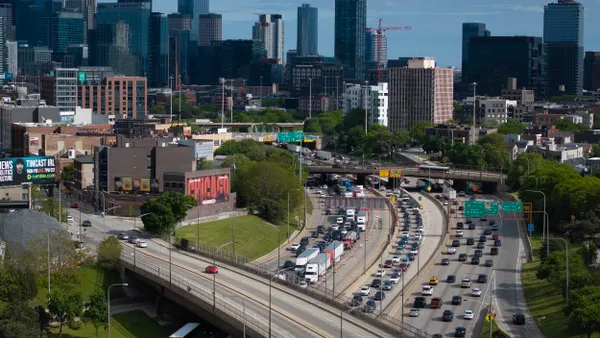Dive Brief:
- New York City Comptroller Scott Stringer released a plan to end what he called a "two-tiered" transit system, urging the Metropolitan Transit Authority (MTA) to reduce fares on the Metro-North and Long Island Rail Road (LIRR) to the same price as a subway fare.
- In the report, Stringer said that with ticket prices at those commuter rail stations nearly four times as much as the subway, it forces residents of outlying neighborhoods who only have access to those stations to drive, take long commutes to alternative points, stay home or pay higher fares.
- "The MTA should stand clear of the doors, not hold service from the straphangers who need it most," Stringer said in a statement.
Dive Insight:
Stringer’s proposal would lower all commuter rail fares in the city’s five boroughs to the base Metrocard fare of $2.75 and allow free transfers from commuter rail to buses and subways, making it an attractive change for the thousands of riders who rely on Metro-North and LIRR. But the plan has already come under criticism from the MTA, whose Chairman Joseph Lhota released a statement to AM New York and other outlets, denouncing the plan for being "fiscally irresponsible."
"The MTA is not a financially self-sustaining organization and for the recommendations of the City Comptroller to be implemented, a subsidy is required,” Lhota said.
The proposal is a further recognition from New York City officials that more must be done to encourage transit use and reduce the crippling congestion on its streets, and another sign that officials want to see further regional integration between the metropolitan area’s slew of transit and rail systems. While the city has been able to pass legislation to try and get a handle on the ride-hailing industry, at times it has struggled to do the same to help public transportation, and also found the state government in Albany reluctant to appropriate more money to help despite proposals for congestion pricing.
As with many city initiatives, the issue of money, specifically how any fare reductions will be subsidized to prevent financial losses, weighs heavily. Stringer’s plan could be the start of a series of conversations around how to encourage more New Yorkers to take public transit, although his description of the system being in “crisis” could cause some pause. There is agreement that more must be done, although with many diverging opinions, this issue will surely rumble on for years to come.











